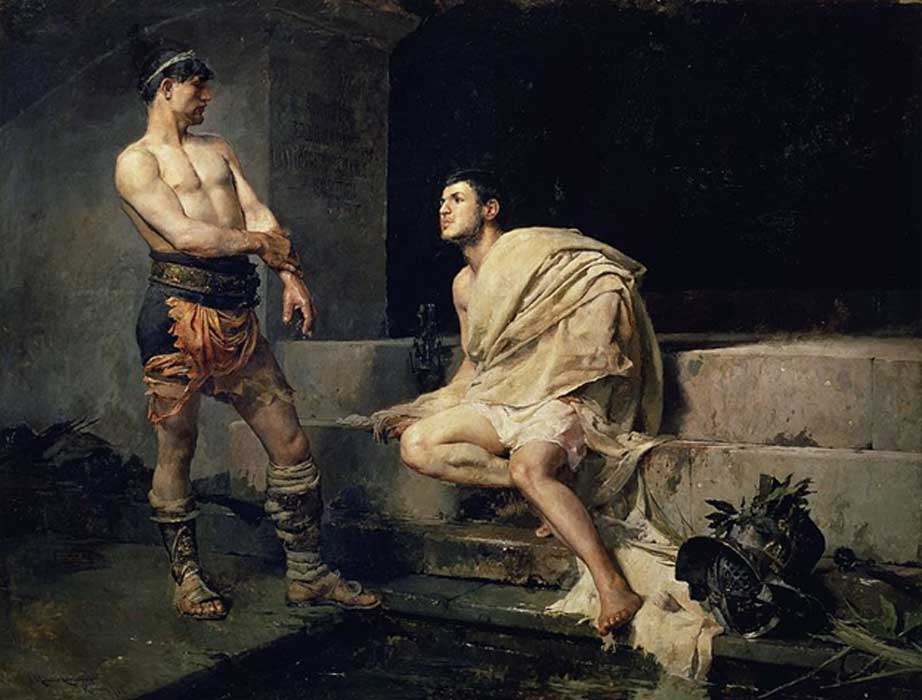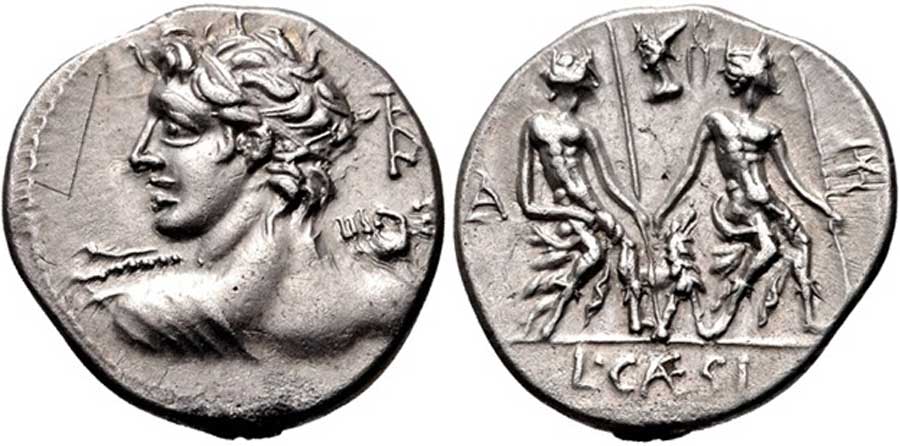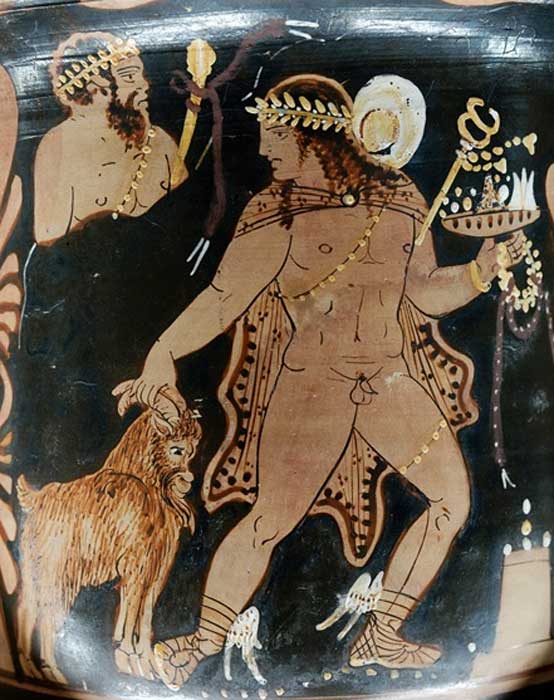
The Rise and Fall of Vejovis, Etruscan God of Criminals, Slaves and Fighters
In 1939, an excavation underneath Piazza del Campidoglio discovered an almost completely obscured ancient Roman building. This ancient Roman building is identified as the temple of Vejovis, one of the oldest of the Roman gods. In the same area, an asylum was also found. Ovid (circa 43 BC – 18 AD) implies that the temple had already existed since the time of Romulus, and it was in this asylum that Romulus extended hospitality to refugees from other parts of the Latium region in order to populate Rome which, at the time, was a new city. In Fasti, Ovid writes: "When Rolumus surrounded the grove with a high stone wall, “Take refuge here,” said he, “whoe’er thou art; thou shalt be safe.” O from how small a beginning the Roman took his rise! How little to be envied was that multitude of old!” The chief feature of this temple, not shared by many other Roman buildings, probably due to the very limited space available, is the transversally-elongated cella, its width almost double its depth at 15 by 8.90 meters (49.21 by 29.19 feet). Another interesting feature of this temple is the marble cult statue of a beardless young man, carrying a bundle of arrows in his right hand and accompanied by a goat.

Interior of the excavated Temple of Vejovis, underneath Piazza del Campidoglio. (Public Domain)
Not much is known about this mysterious youthful god. His name, Vejovis, has long been eclipsed by many other youthful Roman gods such as Apollo or Bacchus, and he does not appear in nearly as many stories as Jupiter, Venus or Neptune. However, Vejovis was apparently an important enough god to be worshipped at Bovillae in Latium, as well as having temples erected for him in Rome, on the Capitoline hill and on the Tiber island. Dates of celebrations for Vejovis are also known as January 1st, March 7th, and May 21st. Unfortunately, nothing definite can be found in relation to the nature of these festivals as well as the rest of the god’s cult.
Invocations of Vejovis in Times of War
As studies on Vejovis show constant updating of his condition and his functions, somewhere along the way Vejovis was also associated with the Underworld - a volcanic god responsible for marshland and earthquakes. Vejovis also earned his place in coins, implying that some powerful Romans considered him as a patron. On a denarius (ancient Roman coin) showing a depiction of the historian and orator Gaius Licinius Macer (82 - 47 BC), the obverse image portrays a youthful Vejovis with a cloak hanging over his left shoulder while he hurls a thunderbolt with his right hand. Some coins also bear the obverse image of Vejovis which depicts him carrying a bundle of arrows, accompanied by goats. However, as a patron to the more powerful men of Rome, Vejovis proved to be less fortunate as Macer who was later impeached by Cicero under the lex de repetundis (the law of extortion). Macer later committed suicide to avoid the verdict.

112-111 BC. AR Denarius Rome mint. Heroic bust of Apollo-Vejovis left, preparing to hurl thunderbolt; ROMA monogram behind / Two Lares seated right, each holding a staff; dog between them, head of Vulcan and tongs above. (CC BY-SA 2.5)
Perhaps due to the asylum found near his temple, Vejovis was also considered the patron of criminals, slaves and fighters. The temple of Vejovis was considered as a safe-haven for wrongly persecuted people and dedicated to the protection of immigrants to Rome. His role as a protector may have led to Vejovis’ frequent invocations in times of war. Livy (59 BC - 17 AD) noted that Roman general Lucius Furius Purpureo successfully called upon Vejovis to route the Gauls at the Battle of Cremona in 200 BC. Macrobius’ fifth century AD Saturnalia preserved one of Vejovis’ invocations which clearly draws upon Vejovis’ destructive aspects: “Father Dis, Veiovis, Manes, or by whatever other name it is right to call you: may you all fill that city of Carthage, and that army of which it is my intention to speak, and those who will bear arms and missiles against our legions and armies, with the urge to flee, with dread, with panic; and may you lead away that army, that enemy, those people who dwell in these places and regions, fields and cities, deprive them of heaven’s light…”

Hermes leads a goat to the sacrifice. Side A of a Campanian red-figure bell-krater 360 – 350 BC Louvre Museum (Public Domain)




